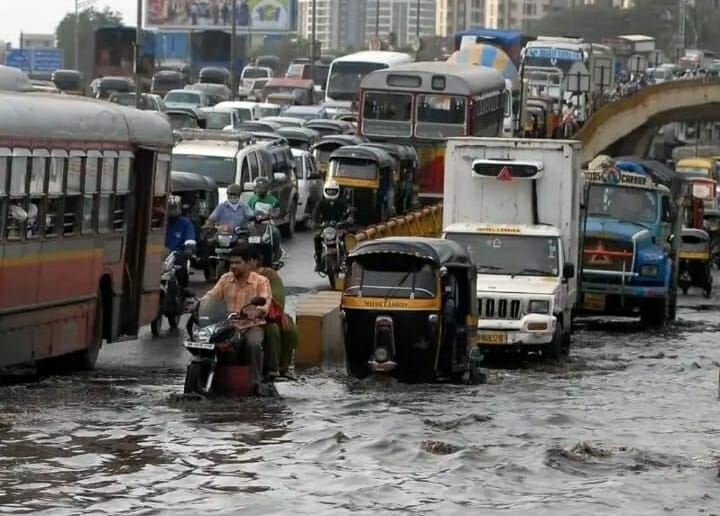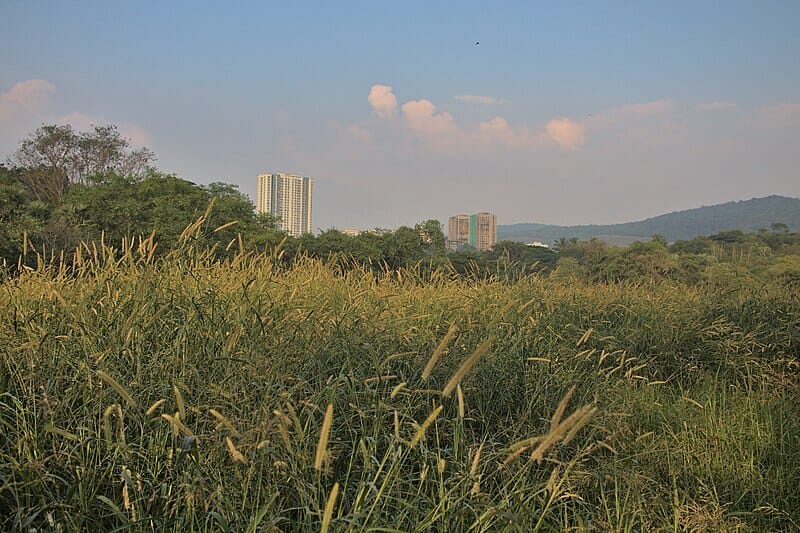A raft of proposals for the beautification of Mumbai was announced recently amid well-orchestrated publicity. The project which is estimated to cost Rs 1700 crore is slated to be completed by March 2023. Neighbouring Thane will be forking out Rs 100 crore for a similar beautification project.
The “Mumbai Beautification Plan” includes beautification of road dividers, improvement of footpaths, installation of street furniture and street lights, the beautification of traffic islands, optimum usage of public spaces underneath bridges, maintenance of toilets and creation of wall paintings and murals.
Even the most politically naïve citizen will refuse to believe that these sudden beautification plans are not a desperate attempt to cosy up to voters before the municipal polls looming in the near future!
The average voter in Mumbai would like to know why the state government, which has spent thousands of crores of the taxpayers’ money on infrastructure projects in the city, did not draw up beautification plans for the city much earlier and is doing so now, conveniently close to the elections. This increases scepticism among voters and erodes trust in the government of the day.
Beautification project does not address our needs
Most of the proposals for the beautification of the city drawn up by the government are purely cosmetic. The city of Mumbai, which feeds millions, has grave, intrinsic and fundamental issues, which need to be resolved urgently, otherwise the city will fade into oblivion.
This may seem like a harsh prediction, but it is a mirror image of the brutal reality which could overtake the city. The elected representatives of the city must introspect deeply and focus on areas which could uplift the city.
Read more: What will beautification do for slum population of M-east ward?
Mumbai desperately needs better roads, for example. Even Tier II cities like Lucknow have roads which are better. Innumerable lives have been lost on the city’s killer roads, and while elected representatives and bureaucrats have sought to blame the monsoon for their conditions, if Mumbai has a heavy monsoon, states like Kerala and Goa have even heavier monsoons and yet their roads are enviably smooth. A journalist once spoke to a corporator in Bandra (W) asking for the reason for Mumbai’s poor roads and he replied instantly “Don’t ask me this question!” An intriguing situation and one that bears considerable thought!
The current state government has sought to alleviate the situation by planning to concretise the roads of the city but concrete is not an environmentally-friendly solution and its usage will involve a long gestation period which will throw the city out of gear. Many traffic experts have repeatedly suggested that the current contractors be sidelined and the city’s roads be constructed by a company with proven credentials, such as L&T.

Mumbai’s chaotic traffic, with its vicious traffic snarls, also needs to be streamlined. Traffic experts have suggested mass transport with even more buses and trains than those currently in use. Well-known architect, Nitin Kilawalla, believes that surface transport, with more buses and trains “is the best thing that can happen to the city.” He is vehement in his criticism of the elevated metros and points out that “they use the existing roads to the fullest extent leading to a complete disruption of traffic. We should have had underground metros which would not have disturbed the traffic overhead.”
Read more: How citizens can fight for road infrastructure in the city
Conservation of the city’s green cover
Equally important is protecting Mumbai’s environment. The city has immense geographical advantages, being next to the sea, with urban forests like Aarey and Sanjay Gandhi National Park, an advantage which most metros in the world do not have. But political parties of all ideologies have frittered away these advantages and despoiled the city. According to the non-profit organisation, Wetlands International South Asia, of 22 Indian cities Mumbai has lost the maximum number of wetlands. The organisation has pointed out that between 1970 and 2014 Mumbai lost 71% of its wetlands due to an increase in its built-up area from 149 sq. kms to 1074 sq.kms.
Read more: The story of Aarey forest under three governments
The degradation of its environment has resulted in a drop in its air quality, loss of open spaces, loss of its biodiversity and a critical threat to its unique wildlife. Mumbai’s poor management of its solid waste has only compounded the issue and further damaged its environment. No city can ever be ‘beautified’ if garbage is spilling out onto its streets and beaches!

Conditions of slum dwellers
Another cause of concern for the financial capital of the country is its acres of slums where a majority of its population lives in shanties across the city with no civic amenities whatsoever. When the state government is spending thousands of crores of taxpayer money on infrastructure, why hasn’t it thought to invite town planners to rehouse the slum dwellers in affordable housing? The slum dwellers are cogs in the economic wheel of the city and are helping to turn that wheel around. It is in the interests of both the city and slum dwellers that decent housing at very modest rates is provided to them.
This is another crucial issue which every political party in the state has conveniently neglected as they view slum dwellers as ‘dependable’ vote banks and stepping stones to power.
Mumbai expanded into a megapolis years ago. The city should have expanded dynamically and even more energetically into Navi Mumbai and beyond. This was the vision of the renowned architect, Charles Correa, to save the city. Navi Mumbai has not yet been developed into a counter magnet which could attract talent and be a rival to Mumbai and thus be the new pole star for the average citizen.
Read more: Can the Navi Mumbai Development Plan 2018-38 pave the way for more inclusive housing?
Building a city truly for and of the people
The crores allocated for beautification of the city could have been better utilised consulting citizens and town planners about creating a liveable and sustainable city, as also executing projects in a transparent and time bound manner. Most importantly, these projects must address the urgent needs of citizens otherwise they must not be conceived and executed in the first place.
When the city faces such grave problems, washing of footpaths and roads, illumination of forts and beaches or attractive street furniture does not even superficially address its problems. It’s a cruel neglect of a great city.
Mumbai city need to have carefully planned projects. The cosmetic changes of Rs 1700 crores will vanish in 2 years and will have to be redone.